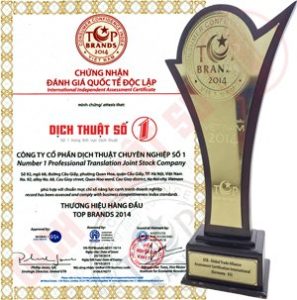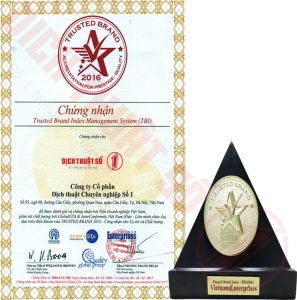Thai Thai and Vietnamese are two languages with a long history of development in the Southeast Asian region, representing two different cultures and countries: Thailand and Vietnam. In this article, we will learn about the differences and similarities between these two languages.
>>>See more: Vietnamese to Thai Translation: Notarized Translation, Fast Delivery
Similarities between Thai and Vietnamese
Thai and Vietnamese, although belonging to two different language families, still have certain similarities due to their geographical location and cultural influences in the Southeast Asian region. Below are the notable similarities between the two languages:

Use of tones
Both Thai and Vietnamese are tonal languages, meaning that a change in tone can completely change the meaning of a word. This creates an important factor in learning and pronunciation. Vietnamese has 6 tones, while Thai has 5 tones. For example, the word “ma” in Vietnamese can have many different meanings such as “ma,” “mà,” “má,” depending on how the tone is used, similarly the word “mai” in Thai can have many meanings such as “go,” “moi,” or “no” depending on the tone it is attached to.
>>>See more: Accurate and Cost-Effective Thai Translation Services
Same sentence structure (Subject - Predicate - Object)
Both languages use the Subject-Verb-Object (SVO) sentence structure. This makes learning Thai and Vietnamese grammar easier for native speakers learning the other language.
Vocabulary influenced by Chinese culture
Both Thai and Vietnamese have strong linguistic and cultural influences. Chinese culture. Many words in both languages are of Chinese origin, especially those related to Buddhism, classical literature, and cultural terms. However, this influence is more evident in Vietnamese than in Thai.

>>>See more: Summary of Thai vocabulary by common topics for beginners
Geographical location and regional cultural influence
Thailand and Vietnam are both Southeast Asian countries, with many similarities in culture and society. This has contributed to the development of similar terminology, customs and expressions in the language. Cultural exchanges through trade, tourism and diplomatic activities have helped to form similarities in the vocabulary relating to cuisine, art and customs.
Respect for seniority in communication language
In Thai and Vietnamese, the expression of respect and hierarchy in social communication plays a very important role. Both languages have a special system of words and forms of address to show respect to elders, people of higher status, or individuals to whom the speaker wishes to show respect. Using appropriate language in these situations not only reflects social etiquette but also demonstrates cultural understanding.
>>>See more: Collection of common Thai travel phrases and effective learning tips
Phonologically close
Some sounds in Thai and Vietnamese are similar, especially in single syllables and short words. Although there are no absolute similarities, these similarities make it easier for learners to get used to the sounds. translate thai to vietnamese and vice versa.
Polite style of expression
Both Thai and Vietnamese have very polite ways of expressing themselves, using formal and subtle words in everyday communication. Thai and Vietnamese people often pay attention to modesty and respect for the other person in the way they speak.
These similarities not only make it easier for learners of one language to pick up the other, but also highlight the cultural connection between Thailand and Vietnam.

>>>See more: Detailed instructions on how to translate Thai and things to note
Compare the differences between Thai and Vietnamese
Below are some comparisons of the differences between the two languages Thai and Vietnamese:
Origin and system of Thai and Vietnamese languages
- The Thai language belongs to the Tai-Kadai language family, one of the major language families of Southeast Asia. The language has a long history of development, with ancient traces that can be traced back to around the 13th century.
- Vietnamese is the official language of Vietnam, belonging to the Austroasiatic language family. Vietnamese originated from the Viet-Muong language group and has developed strongly throughout history, influenced by many different languages such as Chinese, French and English. This language has a written history that began in the 10th century with Nom scripts and then developed into the Quoc Ngu writing system that we use today.
>>>See more: Top 6 most popular basic Thai language textbooks today
Thai and Vietnamese writing systems
- Thai language used Thai alphabet, including 44 consonant and 32 vowel, create a writing system quite complicated for foreigners. This requires people to learn thai must grasp reading and combine characters to understand the meaning of the word.
- In contrast, Vietnamese uses the alphabet. Latin, combined with tone marks to indicate intonation. This system makes it easier for learners, especially those familiar with the Latin alphabet, and facilitates learning and communication.
>>>See more: Collection of best free Thai language learning apps for Android and IOS
Grammar of Thai and Vietnamese languages
- Thai Grammar is quite simple compared to many other languages, there are no changes in tense, number or gender of verbs. Learners do not need to change verb forms according to tense or plural, which helps reduce the complexity in grasping grammar rules.
- Vietnamese grammar is flexible and does not have many complicated rules about word changes such as gender or number. However, there are still fixed grammar structures and rules about word usage that learners need to pay attention to, especially in complex sentences or formal writing.
>>>See more: Effective and fast method to learn basic Thai communication
Applications in life
- Thai is mainly used within Thailand and is not widely spoken internationally. However, as Thailand is one of the world's most popular tourist destinations, learning Thai can be beneficial for those who want to live, work or do business in the country.
- Meanwhile, Vietnamese is playing an increasingly important role in the Southeast Asian region thanks to Vietnam's remarkable economic development. With more than 90 million speakers, Vietnamese is gradually becoming a language of great influence in the region and attracting the attention of many countries in economic and cultural cooperation.

>>>See more: Top 12 effective voice translation apps for Thai to Vietnamese
Challenges and opportunities when learning Vietnamese and Thai
Challenges in learning Vietnamese and Thai
Challenges in learning Vietnamese:
- Complex tone system: Vietnamese has 6 tones, which change the meaning of words depending on pronunciation, which makes it difficult for learners, especially foreigners who are not familiar with tonal language.
- Pronunciation and tones: Vietnamese syllables are quite rich, including difficult sounds like “ng,” “nh,” and the use of tone marks can be confusing.
- Grammar is flexible but has exceptions: Although Vietnamese grammar does not change gender or number, learners still have to master sentence structure and some exceptions in word usage.
Challenges in learning Thai:
- Complex writing system: The Thai alphabet with 44 consonants and 32 vowels can be difficult for learners to remember and absorb, especially those familiar with the Latin alphabet.
- Intonation and pronunciation: Thai has 5 tones, requiring learners to practice regularly to distinguish different sounds and intonations, avoiding confusion about meaning.
- Lack of complex grammar rules: Thai grammar is quite simple, with no changes in gender, number or tense, but tones and specific vocabulary make the language difficult to grasp.
>>>See more: Top 8 apps to translate Thai to Vietnamese with standard images
Opportunities when learning Vietnamese and Thai
Opportunities when learning Vietnamese:
- Communication and business opportunities: With more than 90 million speakers, Vietnamese is an important language in business and trade activities in Southeast Asia, especially as Vietnam increasingly expands international exchanges.
- Understanding the rich culture: Learning Vietnamese helps learners gain a deeper understanding of the country's culture, people and history, and helps broaden their vision of the region.
- Career development: The demand for learning Vietnamese and jobs related to this language is increasing, bringing job opportunities for people who know Vietnamese, especially in the fields of tourism, teaching and translation.
Opportunities when learning Thai:
- Work and travel in Thailand: Thailand is a popular tourist destination worldwide. Learning Thai increases your chances of working, living and travelling easily in this country.
- Understanding Thai culture: Thai is the key to help learners explore the unique culture, religion and cuisine of Thailand.
- Opportunities in the service and trade sectors: With the growth of tourism and business in Thailand, people who are fluent in Thai have an advantage in employment in industries related to service, international communication and trade cooperation.
>>>See more: Summary of 10 apps that translate Vietnamese to Thai accurately and quickly
In summary, both Vietnamese and Thai languages have their own challenges in terms of tones, grammar, and writing systems. However, learning these two languages also brings many opportunities, especially in the context of the Southeast Asian region's strong economic and tourism development. Learning Vietnamese and Thai not only opens up opportunities for cultural exchange but also creates career development potential for learners.








